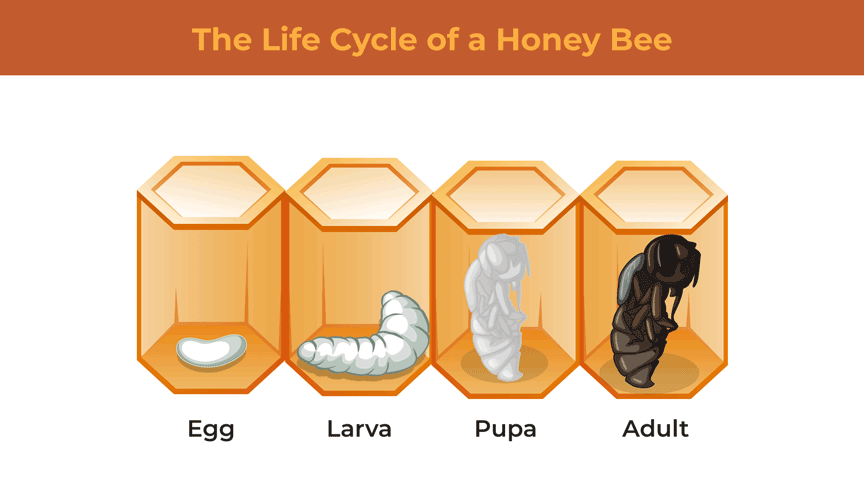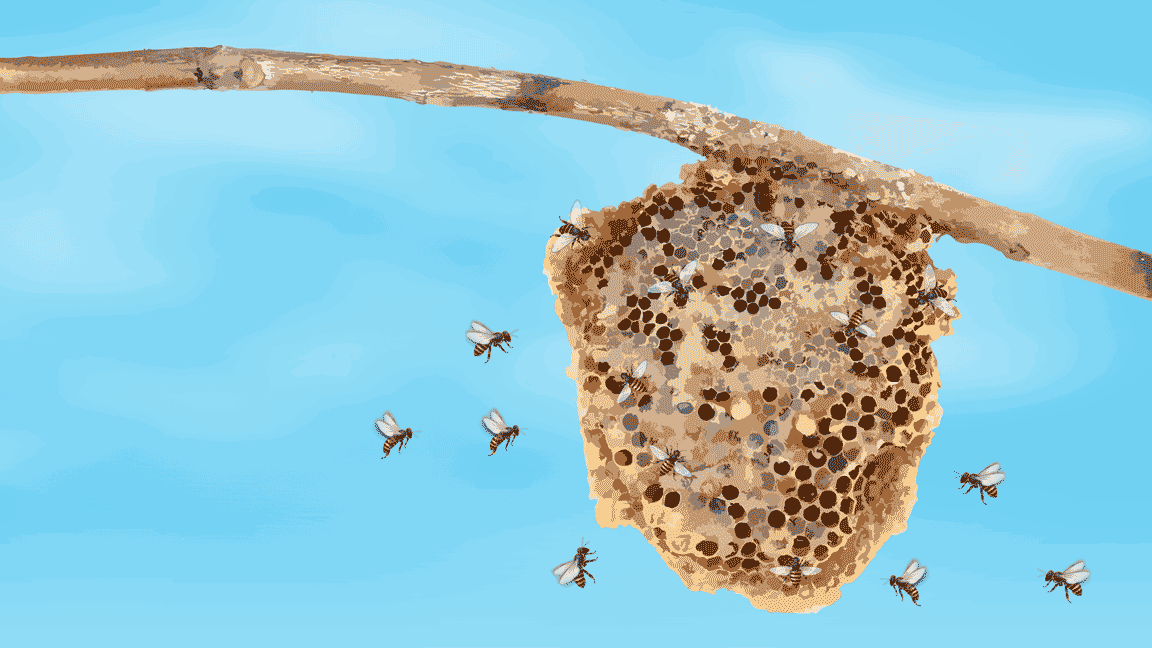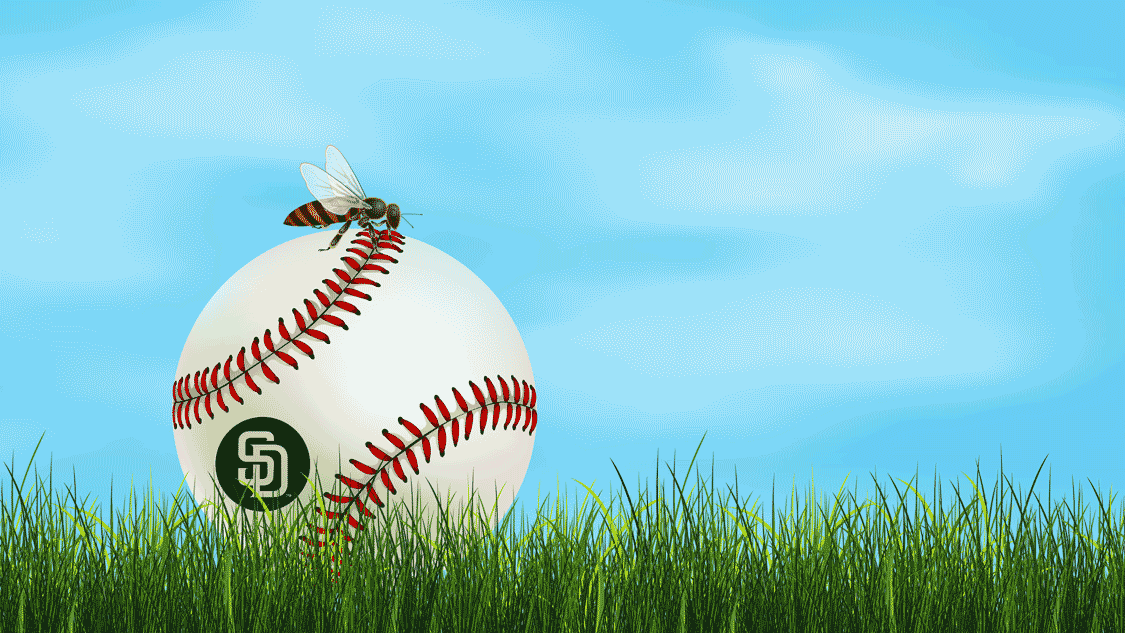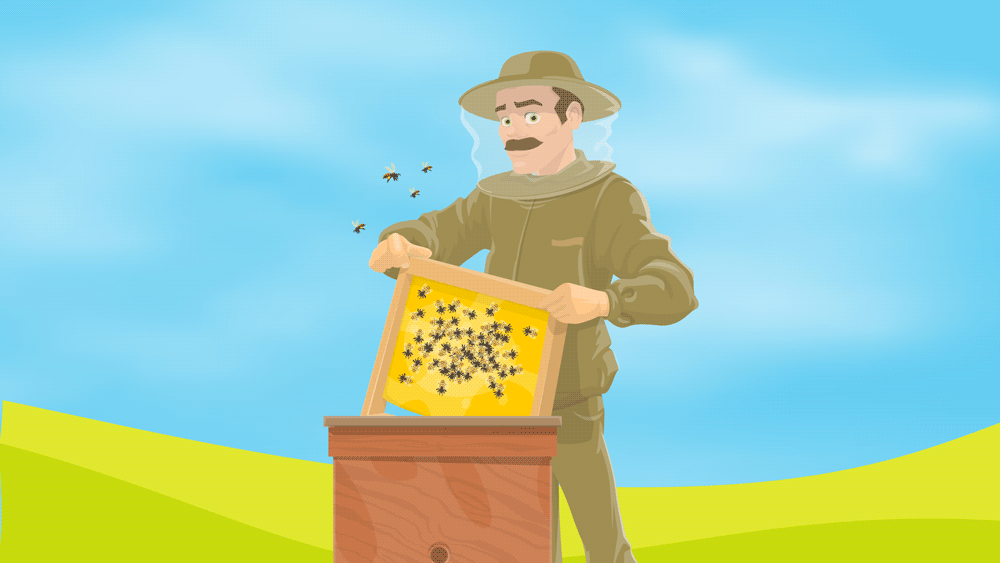Protect Our Pollinators: Please Don’t Make Us Kill Your Bees
Pest Control and Extermination TipsStinging Insect Control and Extermination Articles
From poisonous pesticides to habitat loss, honey bee colonies worldwide are continuing to decline at an alarming rate. As these bees are responsible for nearly 80 percent of all pollination globally, they are the world’s most pivotal, single pollinator species of human food crops – including all types of nuts, fruits, and vegetables.
Because they play such a significant role in the order of our natural ecosystem, finding ways to help local bee populations thrive is our goal at Lloyd Pest Control – meaning we avoid hurting these beneficial bugs at all costs.
As stewards of bees in Southern California, our pest control team does all that we can to promote local beekeepers while avoiding harmful treatments during bee removal, which is why we advocate for all Californians to understand that, while bees can sometimes be scary, killing bee colonies isn’t beneficial for anyone.
To understand why you might be seeing bees outside your school, during your picnic, or while you’re at the ballpark this summer – and why beekeepers are an invaluable resource for bee removal – it’s best to start by learning about the life cycle of these invaluable insects.
The Life Cycle of a Honey Bee
 The life cycle of a honey bee happens in four distinct phases: egg, larva, pupa, and adult.
The life cycle of a honey bee happens in four distinct phases: egg, larva, pupa, and adult.
Egg
As a queen bee builds her colony, she selects cells of her hive to lay eggs in based upon their size, preparation, and cleanliness. The worker bees that build the hive cells regulate the ratio of female worker bees to male drone bees – building smaller cells for workers and larger cells for drones.
If the queen chooses a smaller cell, she releases a fertilized egg into that cell, which develops into a worker bee after 21 days. If she chooses a larger cell, the queen releases an unfertilized egg that develops into a drone bee after 24 days.
Larva
Three days after the queen lays an egg, it hatches into a larva. Visually similar to grubs, bee larvae are white and curled within each hive cell. Shedding their skin five times, these bee babies are fed nearly 1,300 meals a day by nurse bees – growing 1,570 times larger within a five-day span.
After preliminary growth occurs, worker bees begin to seal the larvae in each cell with a porous coating of beeswax. Once sealed, each larva begins to spin a cocoon around themselves inside the cell.
Pupa
Underneath the beeswax cappings, the larvae begin to transform into pupae. During this period, the grub-like bees begin to take shape – growing their eyes, legs, and wings. After roughly 12 days pass, the pupa now has fine hairs all across its body, making its full transition into an adult bee. Once development has been completed, the adult bee chews its way out of its wax barricade and joins the colony.
Instinctually Delegated Duties of the Hive
Hive duties vary drastically between worker bees and drone bees based upon their unique DNA:
Male Drone Bees
Male drone bees spend their entire lives eating honey and waiting for their chance to mate with a queen from another colony to propagate the species. When it’s time for a queen to take her nuptial flight, the drone bees will fly after her and attempt to mate with her in mid-air. If a drone is successful, he will fall to the ground in a triumphant death. The queen mates with up to 20 drones and stores their spermatozoa for the rest of her life.
Female Worker Bees
Female worker bees make up the majority of the colony’s population and are responsible for nearly all of the manual labor it takes to create the hive, build and clean cells, and feed the brood. Worker bees have four instinctual life cycle phases:
Phase 1
Once a worker bee emerges from her cell, she will immediately begin her duties by cleaning the cell she hatched from and others nearby – preparing them for the next round of eggs from the queen.
Phase 2
After three days, her motherly instinct will kick in, and she will begin to nurse the young with royal jelly – a bee secretion that contains proteins, sugars, fats, and vitamins.
Phase 3
Once a week of nursing goes by, worker bees move from the center of the nest to the outer edges of the hive, building new cells and storing food for roughly another week. If need be, worker bees will tend to the queen, guard the nest against intruders, and feed the drones if they are lacking nutrition.
Phase 4
Around the 41st day of stashing away food and creating cells, a worker bee will sense that her journey will soon be coming to a close, meaning that it’s time for foraging to occur. Arguably the most dangerous job for a bee, she will journey into the wild, forage for nectar and pollen, and bring it back to the colony. Once a few weeks go by, she will remove herself from the hive due to her old age – ensuring her brothers and sisters don’t have to remove her corpse if she dies in the nest.
What To Do If a Bee Hive is Near You

Honey bees look for hidden spots to build their nests, including areas like:
- Rock crevices
- Hollow trees
- Fences
- Eaves
- Siding
- Inside walls
Hives usually aren’t hard to spot either, as some nests can grow big enough to support up to 50,000 bees. Unlike wasp nests, beehives are rich brown-gold and have a visible honeycomb structure.
If a colony of honey bees builds their nest near you, you’ll need to call a local beekeeper to safely and humanely remove it. If you’re allergic to bee stings, do your best to stay far away from the hive while a beekeeper is on the way to your property. Honey bees are typically not aggressive and will only defend themselves if disturbed.
To err on the side of caution, you should stay more than 50 feet away from the hive at all times, as you might be dealing with Africanized “killer” honey bees – a species of bee that are more territorial and aggressive when they perceive a nearby threat.
Summertime Bee Swarms
Bees don’t have to build a nest nearby to be a potential threat. When bee colonies outgrow their nests or feel threatened after nesting season, they will cluster together and journey into the wild to find a new place to call home.
Known as swarming, small groups of bees will settle in temporary spots while a few members of the colony seek out the best place to begin rebuilding their hive. Huddling together on walls, decks, tree branches, or simply in mid-air, bees will swarm around the queen for a short period of time until the perfect nesting place is located.
While bee swarms can seem daunting, there are very few cases of people being stung during the honey bee’s re-nesting journey – which is why it’s best to let their natural life cycle unfold instead of harming or killing the colony. Fortunately, honey bee swarms tend to dissipate after 48 hours with no intervention, so waiting it out is oftentimes the best solution.
An Affinity for America’s Pastime

Here in Southern California, our very own San Diego Padres have dealt with baseball-loving bees on numerous occasions. Unfortunately, these situations aren’t always handled the humane way.
Earlier this month, an exterminator dressed in a beekeeper’s suit was called into the Padres vs. Marlins game to take care of a swarm of bees that surrounded a field microphone behind home plate. Using lethal force, the exterminator sprayed the colony of bees with poison, killing hundreds of hive members on live TV.
Here at Lloyd, we know that exterminating bees is the wrong thing to do for our planet, which is why we partner with local California beekeepers to properly remove and relocate honey bee hives or swarms near you. Rather than taking the easy way out with insecticides or bee sprays, we prefer to take the extra time to ensure our local bee colonies can proliferate and thrive in the wild.
How To Keep Bees Away While Protecting Their Colonies
Although it’s difficult to detect where bee colonies will swarm when they’re searching for a new home, there are a plethora of ways you can keep bees from being attracted to your area. To begin, make sure to keep plants out of your yard, garden, or landscaping that bees like to feed on.
Native Southern California Plants That Bees Are Attracted To
Bees can extract nectar and pollen from many plants native to Southern California, including:
- Frikart’s aster
- Ray Hartman’s California lilac
- Western redbud
- California poppy
- Blanket flower
- Goodwin Creek lavender
- Catmint
- Russian sage
- Germander sage
- Cascade Creek goldenrod
Plants that are native to your area will be the most attractive to local bees, so it’s best to check with the California Native Plant Society or a field guide to understand what nectar-rich flowers draw in bees near you.
Plants That Bees Stray Away From
Much like wasps, bees are normally repelled by plants with off-putting scents, plants with little nectar, or flowers that are red (Bees’ photoreceptors can’t perceive the color red, but they can visualize yellow and orange light wavelengths).
Garden plants that bees dislike include:
- Cucumber or cucumber peels
- Basil
- Red Geraniums
- Marigolds
- Wormwood
- Mint
- Eucalyptus
- Citronella
- Pennyroyal
Many plants that bees stay away from – such as cucumber, basil, and mint – double as great ingredients for cooking or creating craft cocktails!
Other Tips & Tricks To Keep Bees at Bay the Humane Way
When enjoying the outdoors, there are a few additional rules to follow to keep bees from being attracted to your area:
- Avoid wearing brightly colored clothing or floral patterns.
- Move floral arrangements or potted flowers away from common outdoor areas.
- Keep food eaten outdoors in tightly sealed containers.
- Pick up food trash promptly and place in a receptacle with a sealable lid.
- Avoid wearing perfume or cologne if you know you’ll be outside.
Bees don’t normally attack unless they feel threatened, so if one is buzzing by you, avoid hitting or swatting it at all costs. Instead, leave the area for a little while and wait for the bee to fly away.
Save the Bees in Southern California with Lloyd Pest Control

Allowing bees to coexist with us means learning how to help them adapt to our changing world, but it also means that we need to change our perception about killing bees when they intervene in our daily lives. With a little patience and understanding – and the help from professional beekeepers – we can keep local bee populations up and our produce properly pollinated.
If you ever find yourself in an area where bees are swarming or there’s a nearby hive, make sure not to advocate or perform any harmful honey bee removal methods. Instead, seek shelter and wait for the bees to pass, or give a local beekeeper a call for professional bee removal in Southern California.






